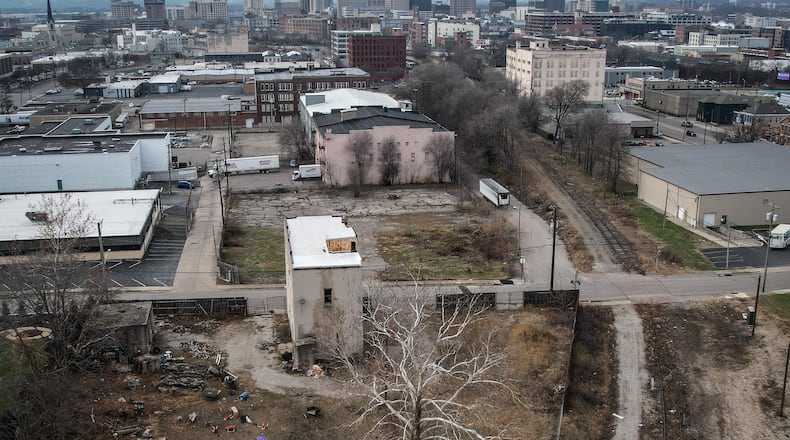The vacated track in question stretches 6.5 miles from just east of the Oregon District (near Third and McDonough) through east Dayton along Hamilton Avenue and U.S. 35, before turning south, running along Woodman Drive and ending near Delco Park in Kettering.
The city of Dayton will receive $1.5 million from the federal government for the Flight Line project as part of the $1.7 trillion spending bill that President Biden signed late last month after it passed both chambers of Congress.
Credit: JIM NOELKER
Credit: JIM NOELKER
The bill contained more than $180 million for local projects across Ohio in approved Congressionally Directed Spending requests (earmarks), according to U.S. Sen. Sherrod Brown’s office.
Sen. Brown (D-Ohio) said the Flight Line project will help build a more complete transportation network by closing two gaps in the Miami Valley’s regional trail network.
The project will help connect downtown to East Dayton and Kettering while strengthening the links between the region’s 350 miles of multi-use trails, officials said.
“This regional trail network offers safe opportunities for pedestrians and bicyclists to travel, and the Flight Line will support the community’s broader economic development plans,” Sen. Brown said.
U.S. Rep. Mike Turner, R-Dayton, also submitted a community project funding request seeking $1.5 million for the Flight Line project.
Dayton wants to buy the 6.5-mile vacated track from Norfolk Southern. The city and Norfolk Southern have spent years in purchase discussions but never were able to reach a deal.
This funding will go toward acquisition of the rail line.
The Flight Line would be more than just a trail because it is an open space amenity that connects to various green spaces, said Tony Kroeger, Dayton’s division manager of planning and land use.
The western section of the rail line is elevated and would provide sweeping views of downtown and other parts of the city.
“It will be a unique regional asset — particularly unique due to the elevated segment of the prospective trail,” Kroeger said.
If Dayton acquires the rail line, the city will seek various funding sources to pay for the work to convert it into a new trail and community amenity, Kroeger said.
“Broadly speaking, funding for implementation is more accessible than acquisition,” he said. “Funding sources will largely determine the timeframe for implementation.”
Dayton may try to use some of its future Community Development Block Grant (CDBG) funds to help pay for the project, according to the city’s application seeking funding from the Priority Development and Advocacy Committee (PDAC).
The entire Flight Line construction project, which likely would occur in phases, could cost more than $5.7 million.
Last month, Dayton city planner Susan Vincent told the Dayton Daily News that Norfolk Southern is still at the negotiating table and remains willing to sell the abandoned line.
About the Author




